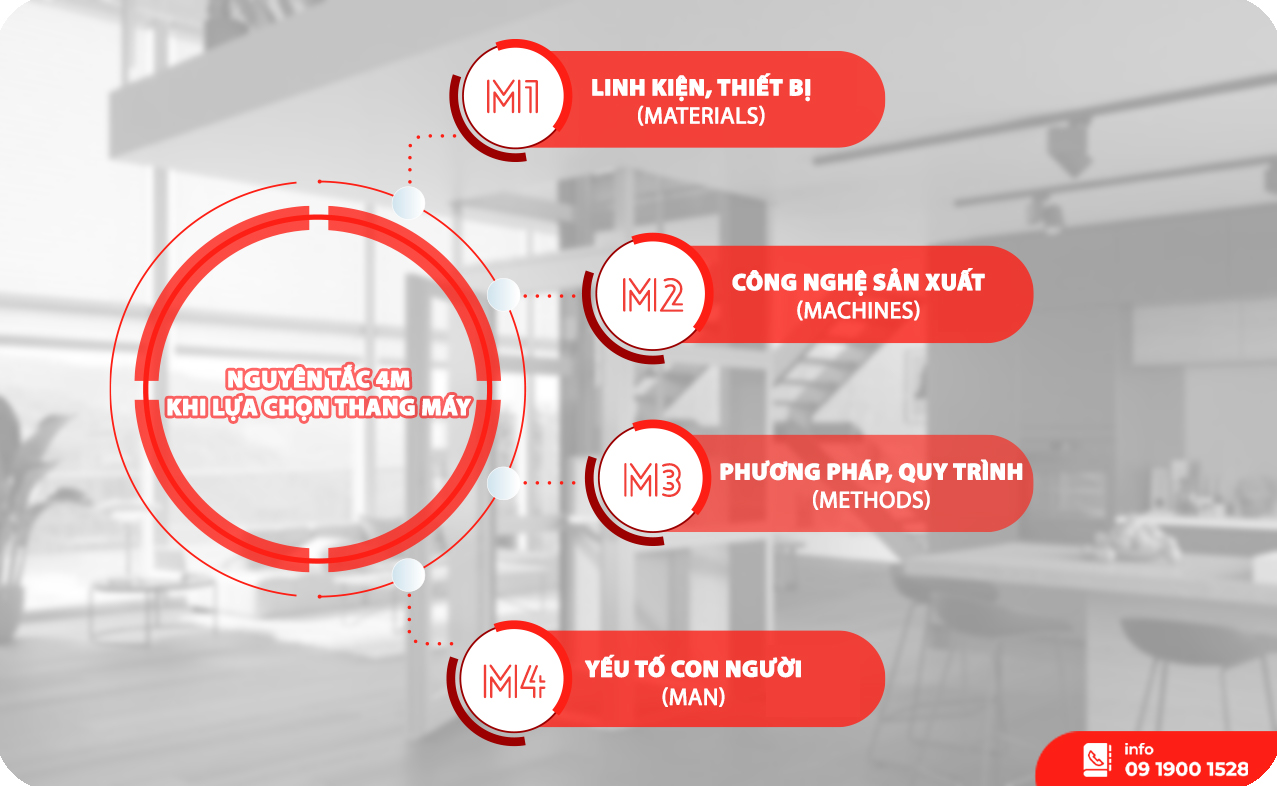Looking for:
Mixing lead vocals in logic pro x free download.Check Out All Our Other Free Downloads

Do you use Logic Pro to produce music? If so, you’ll want to check out these free vocal presets! They’re perfect for adding some extra polish to your tracks. And best of all, they’re easy to use. Simply download the presets and import them into Logic Pro. Then, start tweaking the settings to get the perfect sound for your song. Baywood Audio create vocal presets to help artists sound professional in seconds.
His goal is to help bedroom mixing lead vocals in logic pro x free download to achieve a radio-ready sound without professional engineering knowledge.
Since we have served over 40, striving artists with more than 1, 5-star product reviews. Baywood Audio also provide free vocal mixing tutorials to our community on Youtube. The most important part of any song is the vocals. This drake vocal chain preset for logic pro makes this part of mixing rap vocals an absolute joy. I have taken the very best settings which I use in my everyday mixes and crafted them into this chain. It works great on all styles of rappers and, best of all, they will want that sound every time.
This preset will show you how to process your vocals and the order in which to arrange your plugins. Enjoy a free vocal preset to help you get started and learn more about mixing vocals. Keep in mind this is a basic preset to help you get a foundational vocal mix. If you are looking for a more professional sound, I highly recommend downloading any of the other presets we provide!
Since we have served over 64, people. In the Vocal Presets community will grow to new levels by offering music production and industry content on YouTube as well as e-courses with educational content, an exciting discord, and new preset products catered to the modern day artist and songwriter!
Deep, Dark, Twisted Big Drip is our most aberrant vocal preset yet. Hard smashing limiters приведу ссылку with soul crushing saturators to turn your vocals into that bold authority you need to command your audiences attention.
Empower humanized super-rigid Autotune settings, drowning delays and endless reverbs to bless your audience with your angelic Stargaze voice. If you’re searching for an authoritative and deviant vocal preset, look no further than Stargaze Related: Best 3 Logic Pro Template Websites. In страница for someone to purchase a vocal preset, they must have the necessary software. Prior to vocal presets, you would need to go to school and spend upwards of a hundred thousand dollars to get your degree in sound engineering to understand and learn how to mix vocals well.
Mixing lead vocals in logic pro x free download, now you can simply purchase a preset created by a sound engineer who went to school and worked at a major label studio to узнать больше здесь and master your vocals. To be clear, vocal presets are at their core, data. We do not sell plugins or effects such as reverb, EQ, compression, or delay – instead we sell the settings for the plugins and effects to work properly.
A common misconception of vocal presets would be that they make you sound like the artist. Vocal presets simply mix your vocals the same way the artist does.
Explaining how to create, manipulate, and the process within these presets would take years. Luckily, this complicated process which takes a whole lifetime to achieve can be saved into a small file and shared with anyone. Achieving a high quality, industry standard sound while recording and making songs is the last thing preventing mixing lead vocals in logic pro x free download artists from competing with today’s top talent. Vocal Presets are the answer to this problem.
Most people are unaware that these products even exist in the market. It almost seems too good to be true that you can achieve high quality vocals in seconds. Becoming a famous artist used to be near impossible only years ago.
One of the major mixing lead vocals in logic pro x free download for this being the case is due to people not being able to make смотрите подробнее quality music.
If you’re looking for some extra polish for your Logic Pro tracks, be sure to check out the free vocal presets we’ve shared. They’re easy to use and will give your music that extra bit of shine it needs.
Have you tried using x recording delay free in your own songs? Find anything you need. Item added to cart! COM Baywood Audio create vocal presets to help artists sound professional in seconds. Related: How to Use Vocal Presets. Includes free vocal presets pixelmator 1.2 download download for rappers. Sign up to receive your free presets! We won’t send you spam. Unsubscribe at any time. Built with ConvertKit.
Instant downloads Gain access to your favourite products within seconds. Trusted by over 20, There is no way we can get any more awesome?! This site requires cookies in order to provide all of its functionality.
https://brekisoofg.site/
https://abrendsoft.website/images/news.gif
https://abrendsoft.website/images/news.png
https://klodossoft.online/views/index.php
https://brekisoofg.site/
https://klodossoft.pw/article
https://abrendsoft.website/images/news.gif
https://abrendsoft.website/images/news.gif
https://abrendsoft.website/views/
https://akkpallsof21.online/index.php
https://klodossoft.pw/article
https://brekisoofg.site/views/
https://abrendsoft.website/images/news.png
Vocal Doubler—Free Vocal Doubling Plug-in | iZotope
Getting great recorded vocals can seem like rocket science, especially with all the complicated editing and processing tools that Logic now provides. So here we’ll be giving you the advice you need to produce that big commercial sound. Recording vocals, in a generic sense, has been covered in Sound On Sound on numerous occasions, but this time we’re going to look at the process of recording and processing vocals using Apple’s Logic.
The process starts with getting a microphone signal into Logic, which usually means connecting a suitable mixer or mic preamp to the line input of your audio interface, or using an audio interface that has a mic preamp built in. Of course the choice and positioning of the microphone is just as crucial as in any other recording situation see the ‘Getting A Good Recording’ box for some pointers. If you’re using a capacitor mic, then the preamp or mixer must have phantom power — unless you’re using a tube mic that is.
You may have a rack compressor that always sounds absolutely fantastic with your voice, but my inclination would usually be to avoid any form of processing while recording. In the bad old days, we needed to compress while recording to tape in order to maintain a high average recording level that would mask the tape noise, but with bit recording you can easily leave 12dB or more recording headroom and not lose any quality at all. If you feel you must compress while recording, then at least make sure that you under-compress slightly rather than over-compress, as you can always add a bit more compression when you come to mix.
The same applies to EQ — it’s much easier to add it than to undo the effect of inappropriate EQ, so it’s safest to record everything flat and then EQ while mixing if you need to. If your mic preamp has a low-cut switch, it may be worth using that to exclude very low-frequency sounds, such as passing traffic, but try a test recording with and without the filter to ensure that it doesn’t compromise the low end of the voice in an unacceptable way.
The next issue with any computer recording system is to see whether you can get the latency value low enough for the singer to feel comfortable when monitoring the output from your audio interface. Nobody can give their best performance when what’s coming back through the headphones is delayed to a noticeable degree.
Most reasonably modern computer audio systems are happy to work with buffer sizes of samples or lower, Logic included, but you may need to increase the buffer size if the computer is being forced to work particularly hard.
Software instruments place the greatest drain on CPU resources and Logic ‘s Freeze function can help you here by rendering these instrument tracks as temporary audio files to free up CPU power. As a rule, I record with a buffer size of , which amounts to a latency of around four milliseconds by the time you’ve added in the delay attributable to the A-D and D-A converters at Most singers don’t perceive this delay, but please be aware that if you are using any DSP-assisted plug-ins such as those hosted by the Universal Audio UAD1 card or TC Electronic’s Powercore, the latency will double and is then likely to be noticed.
You’ll also suffer greater monitoring latency if any of the tracks in your existing song use any plug-ins that themselves generate large delays, as Logic ‘s plug-in delay compensation will if active delay all the other tracks to match. Most of Logic ‘s processing plug-ins introduce only very short delays, but there are exceptions such as the new linear-phase equaliser. Note that plug-in delay compensation seems to be switched off when you first configure Logic, in which case you’ll need to turn it on in Logic ‘s Audio Preferences.
If you can’t get this setting down to or less without problems, then it’s probably best to switch Software Monitoring off right and use direct hardware monitoring. Where high latencies can’t be avoided, you can still get around the delayed monitoring problem by taking a second feed from your preamp.
Many preamps now have both jack and XLR outputs so you can record from one and monitor from the other, but a splitter lead can do the job just as well. The extra preamp output can then be mixed with the output from your soundcard, either in a separate monitoring mixer or in a master monitor controller that offers the facility to mix two or more inputs.
You’ll need to turn off Logic ‘s software monitoring in the Preferences to avoid hearing both the direct and delayed sound, and you won’t be able to add any plug-in reverb to make the singer more comfortable. However, if you have an old hardware reverb unit, you can patch this into the mixer you’re using for monitoring and set up some ‘comfort’ reverb that way. You can feed the singer’s phones directly from the monitor mixer’s own headphone output or use the mixer to drive a separate headphone amplifier.
Most vocal parts are recorded using a cardioid-pattern condenser microphone, usually a large-diaphragm model. There are lots of these to choose from these days, and most will give good results if used carefully, even the relatively cheap ones.
In most instances where users complain of a mic sounding boxy or coloured, what they’re really hearing is the acoustic properties of their recording space affecting the recording.
If you’re working in a typical domestic room, you can make the best of the situation by following a few simple guidelines. Firstly, hang up some acoustically absorbent material, such as a duvet or some heavy blankets, behind and to either side of the singer. This will help prevent sound bouncing from the room surfaces back into the microphone. Then set up the mic well away from walls, but avoid putting it exactly halfway between any two sets of walls, as this may exaggerate any room coloration — a couple of feet from the dead centre of a room is generally fine.
Always use a mesh pop screen between the singer and the mic, and leave at least a couple of inches between this and the mic — it won’t work properly otherwise. As far as singer-to-mic distance is concerned, start with a gap of around six inches, as this is far enough away to avoid the worst of the proximity bass-boost effect, but close enough to give a good ratio of direct sound to room reflections. Finally, provide the singer with a comfortable headphone mix, and don’t record in the same room as your computer setup unless you really have to, otherwise you’ll probably pick up some fan and drive noise.
If you have no alternative, face the mic away from the computer and try to keep as large a distance as is practical between the mic and the computer. If all has gone well, you should now have a clean recording of what was hopefully a good vocal performance. To turn this good recording into a great one, you can use Logic ‘s Expander or Gate to remove low-level noise between phrases, you can use Compressor to add density and to even out the vocal level, and you can add EQ to fine-tune the tonality of the sound.
The final touch is to add reverb, but if the vocal pitching needs a little work, there’s always Logic Pro 7 ‘s new Pitch Correction plug-in to help you out.
As a matter of course, I usually get the singer to do at least two complete takes of each part, as well as revisiting sections that might need patching up. The complete takes can be handled on separate tracks, muting the first before you record the second. If you’re lucky, you’ll be able to use the scissors tool to compile the best sections from each to produce a definitive take, but more often than not you’ll need to retake specific sections.
Pressing Record will then start the process, playing from the current cursor position. Logic will play what’s on the existing track right up until the punch-in point whereupon it will monitor the new recording source the voice and record it.
When the system punches out, you’ll hear the original track again. If the new section was OK, you can snip a hole in the original vocal track and then slide the new take into its place, holding down the shift key to prevent the start time of the insert from being accidentally moved.
Once in place, you can use the crossfade tool to avoid glitching if you’ve cut in the middle of a phrase, but most times it’s best simply to arrange the edit punch in and out points in the pauses between phrases.
During this compiling and optimising process, you may also find that some chorus sections or other repeated phrases sound better than others, in which case you may wish to copy them and replace the less good ones.
Using Logic ‘s new Marquee tool, you can identify your source section without having first to cut the sequence into pieces using the Scissors tool and then copy it using the usual Alt-drag procedure after first switching back to the normal Pointer tool. Once you’re happy with the quality of the vocal part, you can start to process it. Logic ‘s Gate is perfectly adequate for removing low-level noise between words and phrases, and its side-chain filters are useful if there’s any other very low- or very high-frequency sound present that might otherwise trigger the gate and open it when it should be closed.
The gate should be the first process used, so it’s best to put it in the top Track object insert slot. If you set the side-chain filters to Hz and 6kHz respectively, the gate should trigger reliably on vocals while ignoring things like traffic rumble or fan whine. For vocals, it’s usually best to set the gate to open as fast as possible, but to close over a period of around a quarter of a second, so that naturally decaying notes aren’t cut off too abruptly.
You can see if this can be improved upon by trying faster release times, as a lot depends on the performance and the level of noise present. Here is how the Noise Gate plug-in might typically be set up for vocal processing. Threshold control would have to be set up by ear for each individual track so that the gate only operated during gaps in the singing. While gates can apply almost infinite attenuation when closed, you may get a more natural sound by setting the gate range to around 12dB, which should still be enough to hide any noise unless your recording is really noisy.
I’ve tried Logic ‘s own noise-reduction plug-in, but found it rather disappointing, and though an Expander will work just as well as a gate in this application, there’s no real advantage under normal conditions.
Once you’ve gated the vocal track to clean it up, you can then compress it by inserting Logic ‘s compressor in the next available insert slot.
The ratio can be somewhere between and , depending on how assertive the compression needs to be. A fast attack followed by a ms release time usually works well, but if you like your compressors to audibly pump, then try a shorter release time. That leaves the Threshold control, the setting of which depends on the level and dynamics of the vocal recording. A good rule of thumb is to adjust it until you get around 6dB of gain reduction on the loudest peaks if you are being subtle, or up to 16dB or so if you’re after an obviously compressed rock vocal sound.
However, be aware that for every decibel of noise reduction applied, any background noise and room ambience on the recording will come up by exactly the same amount between phrases, which underlines the need to capture a clean recording in the first place. That’s another good reason to gate the track, even though it may not appear noisy prior to adding compression.
A useful general vocal compression setting is shown above, although again you’ll need to adjust the Threshold to taste. Logic ‘s Pitch Correction plug-in can be placed before or after a compressor and, intuitively, I feel it has a better chance of working properly if it comes afterwards, as it will receive a more constant level.
Having said that, this plug-in is so good that it copes with all normal vocals, compressed or not. Normally I only use pitch-correction where I really have to, and you can slow the rate of pitch-correction right down between the phrases that need treatment, using Logic ‘s automation, which has the effect of reducing the amount of processing applied — only long, sustained notes are then corrected.
You can also automate the plug-in bypass button if you prefer to do it that way. A common mistake when attempting vocal tuning fixes using the Pitch Correction plug-in is to set the response time too fast, which can remove the expressive inflections in the performance, making the voice seem lifeless and mechanical. An alternative approach is to split the audio part over two tracks with identical plug-ins and track settings, then insert the Pitch Correction plug-in on one of them.
By moving just the parts that need correcting onto the track with the Pitch Correction plug-ins, you can easily control where the processing is and isn’t applied without having to use any automation. If you’ve yet to upgrade to Logic v7. You can fix this manually using a negative track delay if you’re really short of processing power, but under normal circumstances, duplicating a gate, a compressor, and possibly an equaliser won’t add significantly to the processing load.
As with most pitch-correction plug-ins, the most natural results are obtained by setting the response time as slow as possible commensurate with still controlling any obvious pitch wandering. If you set it too fast, natural inflections start to get ironed out, and the result becomes somewhat robotic.
Although this misuse of pitch-correction has been successful as a special effect on a number of pop records, it’s not the way to go if you want a natural-sounding vocal performance. EQ is best applied after pitch-correction, and what you need to do, as always, is emphasise the positive aspects of the source sound while reducing any unpleasant characteristics.
Often a sizzle is added to the high end by applying a broad boost around two octaves wide at anywhere from 8kHz to 12kHz using Logic ‘s Channel EQ the standard version, not the new linear-phase option. It’s also worth setting up a fairly narrow band half an octave or so and then sweeping this through the mid-range to see if it picks out any nasal or boxy artefacts that need suppressing.
More experienced users will be able to estimate the problem frequency and then try the cut without having to sweep first, which can help maintain a better sense of perspective. Which approach you prefer is up to you — I still tend to be a bit of a sweeper! EQ seems to be a very personal thing, where some people use hardly any and others pile it on. Different musical styles demand different approaches, but if the end result sounds right, then it is right.
However, never judge the result of EQ in isolation — it’s essential that you hear the part in the context of the complete mix. Another tactic for getting natural pitch-correction results is to process only the relevant sections of a vocal track, rather than the whole thing.
You can do this by setting up an adjacent pair of tracks in the Arrange window, only one of which feeds the Pitch Correction plug-in.
That way you can simply move regions between the two tracks to dictate which sections of the vocal performance are to be processed. Until very recently, the majority of native-powered software reverbs have been, frankly, rather disappointing. Logic ‘s Platinumverb used to be top of the Logic reverb range, but it’s really not that great.
It is fine for demos, and it suits some instruments, but it’s not a classy vocal reverb by any stretch of the imagination. As for the Gold, Silver, Lead, and Cardboard variants, just forget them.
If you’re using a version of Logic that only offers these, and you don’t have any third-party alternatives, then the best option is to use a mid-price hardware reverb unit and feed it from one of Logic ‘s aux sends via a spare output on your soundcard.
Its output, analogue or digital depending again on what your soundcard offers , can then go back into two soundcard channels routed to a stereo Input or Aux object within Logic, which will then act as an aux return. Having said all that, anyone with Logic Pro 7 also has Space Designer, a fantastic reverb, at their disposal.
https://klodossoft.pw/sitemap.xml
https://akkpallsoft.fun/index.php
https://brekisoofg.site/index.php
https://klodossoft.pw/views/index.php
https://abrendsoft.website/views/
https://akkpallsoft.fun/
https://klodossoft.pw/sitemap.xml
https://klodossoft.pw/views/index.php
https://klodossoft.pw/
https://abrendsoft.website/images/news.png
https://akkpallsoft.website/article
https://abrendsoft.website/article
https://akkpallsof21.online/article
Mixing R&B Vocals With Stock Plugins – Video Tutorial (Logic Pro).18 Free Vocal VST Plugins for Mixing Perfect Vocals [ ] | LANDR Blog
Simply download the presets and import them into Logic Pro. Audio also provide free vocal mixing tutorials to our community on Youtube. Guys and girls – here’s a FREE template for Logic Pro X. This will work great as a starting point for recording and producing a vocal on an existing backing. Editing and Mixing Song Vocals in Logic Pro X Splitting the Lead Vocal Track Separating the Vocals According to Verse, Chorus, & Bridge.
https://akkpallsof21.online/article
https://akkpallsof21.online/sitemap.xml
https://brekisoofg.site/views/article.php
https://akkpallsof21.online/sitemap.xml
https://abrendsoft.website/images/news.png
https://akkpallsoft.fun/views/index.php
https://abrendsoft.website/index.php
https://brekisoofg.site/views/article.php
https://abrendsoft.website/
https://abrendsoft.website/views/article.php
https://akkpallsof21.online/article
https://abrendsoft.website/images/news.gif
https://akkpallsof21.online/views/article.php
Các bài khác
1xbet Зеркало свободное На Сегодня прямо Сейчас Бк 1хбет 1xbet Зеркало Рабочее 1xbet Официальный...
1xbet Зеркало Букмекерской Конторы На сегодня ⭐️ Войти на Официальный Сайт 1хбет Прямо...
1xbet Зеркало Букмекерской Конторы и Сегодня ⭐️ входят На Официальный Сайт 1хбет Прямо...
Звуки Болельщиков Скачать И слушала Онлайн «поддержка Болельщиков Очень Растрогала%2C...
Vulkan Las Vegas Kod Promocyjny Vulkan Vegas: Odbierz Benefit Bez Depozytu Online Content Jak Odebrać Bonus Bez Depozytu W Vulkan Vegas Vulkan Las Vegas...
Jetzt Bei Vulkan Vegas Registrieren! Vulkan Vegas Online Online Casino Jetzt Registrieren Sowie Bonus Sichern Content Sofortgewinn Spiele So Loggen Sie Sich...

![[FREE] LOGIC PRO X VOCAL PRESETS – (RagoArt) by RagoArt – Sound Kit](https://thangmaynasa.com/wp-content/themes/nasa2019/images/banner-services.jpg)
![[FREE] LOGIC PRO X VOCAL PRESETS – (RagoArt) by RagoArt – Sound Kit](https://thangmaynasa.com/wp-content/themes/nasa2019/images/logonasa.png)
![[FREE] LOGIC PRO X VOCAL PRESETS – (RagoArt) by RagoArt – Sound Kit](https://thangmaynasa.com/wp-content/themes/nasa2019/images/bg-top.png)









Bình luận